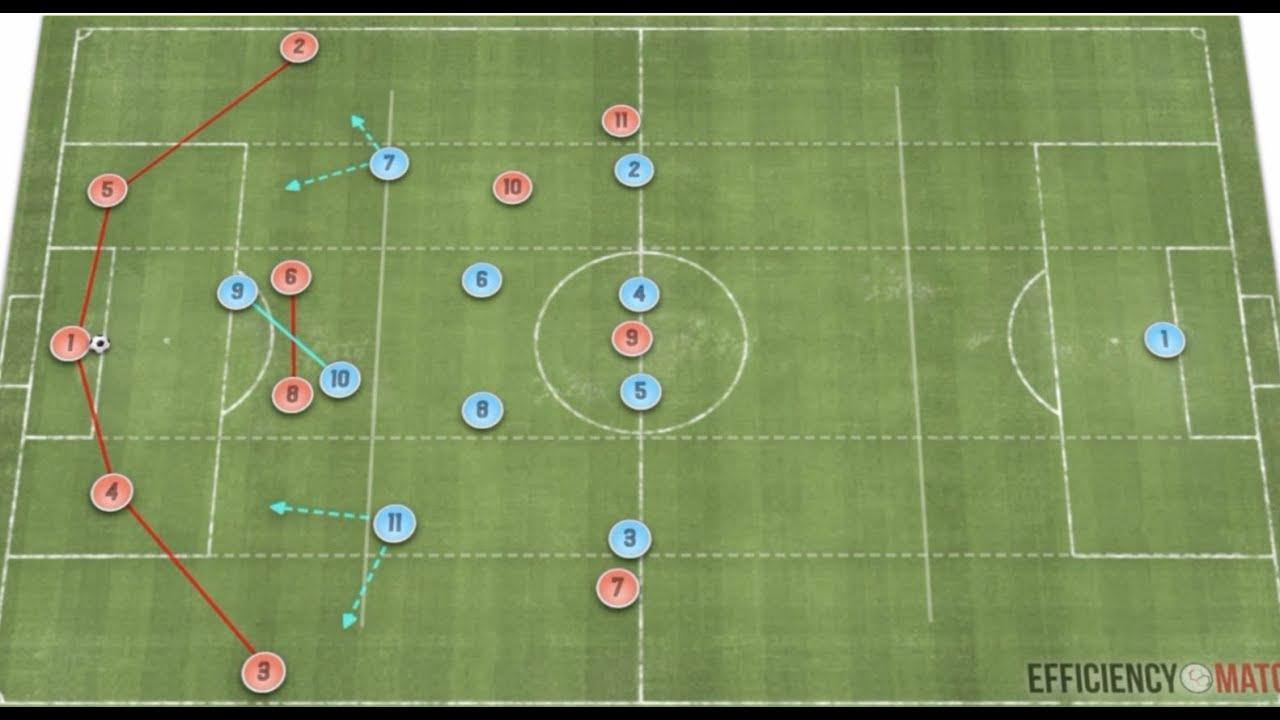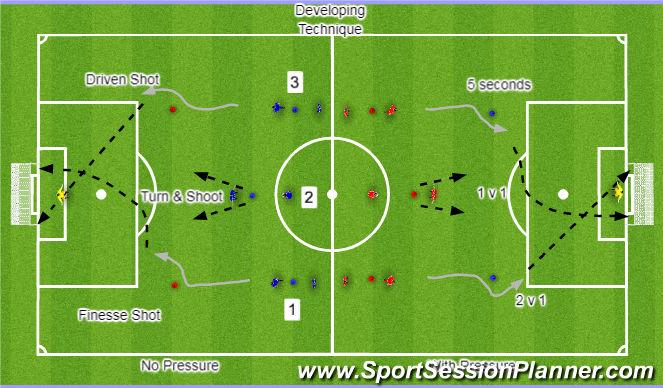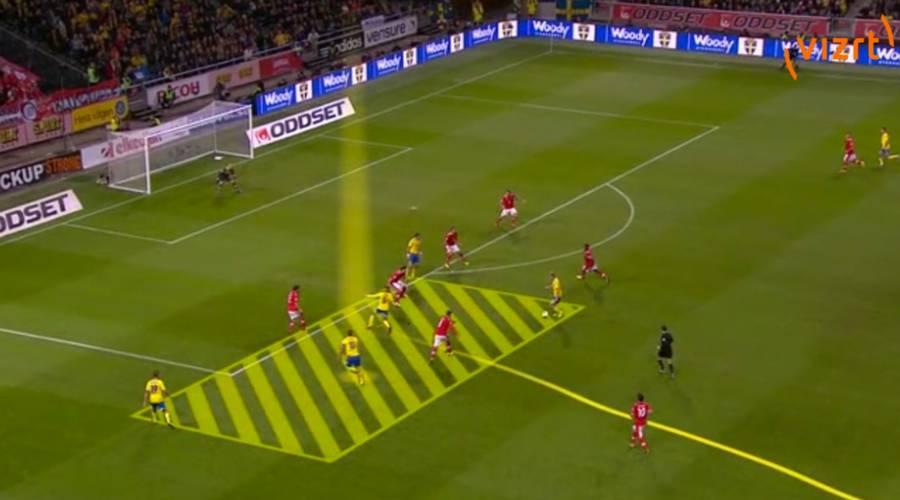Soccer, a game that transcends cultures and unites millions, is often perceived as a simple contest of skill, speed, and teamwork. Yet, beneath the surface of its breathtaking goals and tactical maneuvers lies a wealth of strategic intricacies waiting to be explored. Analyzing soccer games goes beyond mere observation; it’s an art and a science that involves delving into patterns, player dynamics, and situational contexts. Whether you’re a seasoned analyst, a coach looking to refine your strategy, or an ardent fan eager to deepen your understanding, mastering the skills of game analysis can enhance your appreciation of this beautiful sport. Join us on a journey to uncover the methods and tools that can unlock the secrets of the beautiful game, transforming the way you watch, discuss, and experience soccer matches.
Table of Contents
- Understanding Team Tactics and Formations
- Decoding Player Performance Metrics
- Evaluating Match Situations and Key Moments
- Applying Statistical Analysis for Deeper Insights
- Q&A
- In Summary

Understanding Team Tactics and Formations
Team tactics and formations are the backbone of any successful soccer strategy. Analyzing how a team aligns its players on the field can provide insights into its playing style and game plan. Different formations serve distinct purposes, affecting both offensive and defensive capabilities. For instance, a 4-4-2 formation emphasizes a balanced approach, with two strikers and a solid midfield presence, while a 3-5-2 formation allows for more fluidity in attack, employing wing-backs to enhance width. Understanding these nuances can help you predict how teams will behave during crucial moments of a match.
Additionally, the interaction between players in various formations reveals their tactical roles. Observing how players shift and adapt to changing situations on the pitch can highlight their individual responsibilities. Key factors to consider include:
- Player positioning: How effectively players occupy their zones.
- Movement off the ball: The intention behind a player’s runs and movements.
- Pressing strategies: The approach taken to regain possession.
To illustrate this, consider the following table showing common formations and their tactical highlights:
| Formation | Focus | Key Features |
|---|---|---|
| 4-4-2 | Balance | Two strikers, four in midfield, reliable defense |
| 4-3-3 | Attacking | Three forwards, emphasis on wing play |
| 5-3-2 | Defense | Three center-backs, compact midfield |

Decoding Player Performance Metrics
Understanding player performance metrics is essential for dissecting match outcomes and enhancing team strategies. Metrics such as passing accuracy, tackles made, and expected goals (xG) provide insights into individual contributions on the field. By analyzing these data points, coaches and analysts can identify strengths and weaknesses within their squads. For example, a player with high passing accuracy but low xG might be effective in maintaining possession but could improve in offensive positioning and conversion opportunities.
To effectively utilize player metrics, one can apply a range of comprehensive tools and analytical frameworks. Consider breaking down performance into visual representations like charts and tables. Here’s a simplified example of a comparison between two players:
| Player | Passing Accuracy | Tackles Made | Expected Goals (xG) |
|---|---|---|---|
| Player A | 85% | 3 | 0.8 |
| Player B | 78% | 5 | 0.4 |
This structured approach enables a more nuanced conversation about player effectiveness and tactical roles. Additionally, exploring resources from platforms like Bet Reward can supplement your analysis with advanced statistical insights and player performance tracking.

Evaluating Match Situations and Key Moments
When analyzing soccer matches, one must delve into the intricate dynamics of each game by identifying pivotal moments that shaped the outcome. Begin by focusing on key match situations, such as turning points that can revolve around specific goals, penalties, or red card incidents. Consider how these moments impacted player momentum and team morale:
- Goal Moments: Examine the build-up, the finish, and the reaction—did it energize the scoring team or demoralize the opponent?
- Key Saves: Analyze crucial goalkeeper interventions that may have preserved a lead or secured a draw.
- Referee Decisions: Scrutinize controversial calls and their ramifications on player behavior and tactical adjustments.
Moreover, trend analysis over the course of the match can offer insights into a team’s performance. Creating a simple table can help visualize this data by comparing comprehensive aspects:
| Match Aspect | Team A Performance | Team B Performance |
|---|---|---|
| Possession | 55% | 45% |
| Total Shots | 12 | 8 |
| Passing Accuracy | 80% | 75% |
By evaluating these detailed facets, you gain a deeper understanding of how each key moment influences the overall game strategy and performance of both teams. After gathering and analyzing this data, resources like BetReward can assist in gaining further insights into betting predictions and statistics that align with your analysis.

Applying Statistical Analysis for Deeper Insights
Diving into the realm of soccer game analysis, statistical analysis serves as a powerful tool to unlock deeper insights beyond the surface level of gameplay. By employing metrics such as expected goals (xG), pass completion rates, and player heat maps, analysts can dissect team performance and individual contributions. This data-driven approach allows teams to identify strengths and weaknesses, inform training regimens, and make tactical adjustments for upcoming matches.
To effectively harness the power of statistics, analysts often compile data into comprehensive tables and graphs. For example, tracking key performance indicators (KPIs) can offer substantial clarity. Here’s a brief look at a sample table that highlights player performance across various matches:
| Player | Matches Played | Goals | Assists | Pass Completion (%) |
|---|---|---|---|---|
| Player A | 10 | 5 | 3 | 88 |
| Player B | 10 | 2 | 4 | 92 |
| Player C | 10 | 7 | 1 | 85 |
Using this data, teams can analyze the effectiveness of individual players, establish performance benchmarks, and adjust strategies accordingly. By systematically applying statistical analysis, deeper insights transform the game, offering a significant edge in tactical planning and overall performance enhancement. For further resources on leveraging statistical analysis in sports, visit BetReward.
Q&A
Q&A: How to Analyze Soccer Games
Q: Why is analyzing soccer games important?
A: Analyzing soccer games allows coaches, players, and fans to understand the tactical nuances of the sport. It helps identify strengths and weaknesses, improve team performance, and enhance the viewing experience. For coaches, in-depth analysis can guide training sessions, while players can learn to make better in-game decisions.
Q: What key aspects should I focus on when analyzing a game?
A: Focus on several key aspects: team formations, player movements, passing patterns, defensive strategies, and set pieces. Observing how teams transition between attack and defense is also crucial. Additionally, pay attention to individual player performances and their contributions to the team’s overall strategy.
Q: How can I effectively track player movements during a game?
A: Utilizing video analysis software can greatly aid in tracking player movements. However, at a basic level, you can create a simple chart to note player positioning and movements across different stages of the game. Take note of both on-the-ball and off-the-ball actions to capture the complete picture.
Q: What common statistical metrics should I consider?
A: Key statistics include possession percentage, shots on target, pass completion rates, and tackles made. Advanced metrics like xG (expected goals) and xA (expected assists) can provide deeper insights into a team’s efficiency and overall performance. Combining statistics with qualitative observations gives a more rounded understanding of the game.
Q: How do situational factors influence game analysis?
A: Situational factors such as weather conditions, player conditions, and match importance can significantly influence game dynamics. For example, a rainy day may lead to a slower-paced match, while a cup final might see teams playing more conservatively. Always consider these contexts to understand the tactical decisions made during the game.
Q: Can fan perspectives add value to game analysis?
A: Absolutely! Fans bring unique perspectives and emotions to the table, often highlighting elements that may be overlooked in a traditional analysis. Engaging with fan discussions, either through social media or forums, can enrich your understanding of the game and introduce diverse viewpoints on tactical situations.
Q: What tools can help enhance my game analysis?
A: There are various tools available, ranging from software like Hudl and Wyscout to mobile apps designed for live game analysis. Additionally, websites offering detailed statistics and heat maps can provide vital insights. Don’t forget the traditional notepad or a voice recorder—sometimes a personal touch is what you need to capture that perfect moment of analysis.
Q: How can I apply my analysis to future games?
A: Use your findings to create actionable insights for future matches. If you notice recurring mistakes, formulate training drills to address those weaknesses. Share your analysis with your team or coaching staff to foster discussions about tactics. Continuous analysis is key to evolving in the game, whether as a player, coach, or analyst.
Q: What’s the most rewarding aspect of analyzing soccer games?
A: The most rewarding aspect is witnessing the growth and development that comes from your insights. Seeing a team improve their performance based on analysis or discovering a hidden talent during a game can be immensely gratifying. Ultimately, analyzing soccer enhances appreciation for the sport, enriching each match you watch.
In Summary
In the ever-evolving landscape of soccer, the ability to analyze games is not just an art; it’s a crucial skill that empowers fans and professionals alike. By honing your analytical techniques—from breaking down player movements to interpreting tactical formations—you can deepen your appreciation of the beautiful game and gain insights that transcend mere scores and statistics. Whether you’re a budding analyst or an ardent supporter looking to enhance your understanding, the tools and methods discussed will serve as your compass in navigating the intricate tapestry of soccer matches.
As you embark on your journey to dissect the nuances of this global sport, remember that every game tells its own story. With each analysis, you contribute to a richer narrative, merging passion with precision. So, lace up your analytical boots, gather your notes, and dive into the next match with a new perspective. The world of soccer is vast and full of surprises; with the right approach, there’s always more to discover. Happy analyzing!